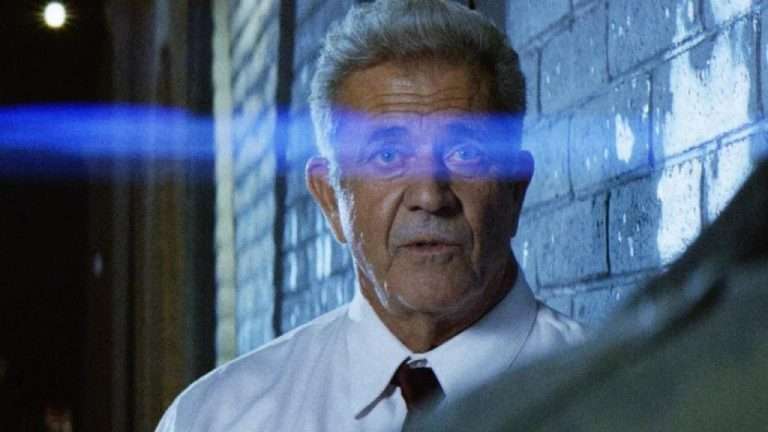Experimental horror can assume many faces: the hallucinatory, psychedelic nightmare of Alejandro Jodorowsky’s Santa Sangre, the grotesque parable about death and rebirth in Begotten, or a woman’s gradual descent into madness in Inland Empire. Every one of these distinct worlds evokes fears that are fundamental to the human condition, waiting to haunt us when we least expect it. Director Kyle Edward Ball has found a way to funnel specific fears that creep around the edges of childhood — the raw fear of waking up to a hypnagogic state, where those we love and look up to for protection are not who they seem. With his wildly experimental, loose-narrative horror Skinamarink (2022), Ball captures the core essence of this primal childhood fear that still exists in the recesses of our adult minds.
Skinamarink is an exercise in patience. It is less of a coherent narrative and more of a grainy fever dream — a state of acute paranoia that is unfurled with the aid of isolated shots of doors (which vanish inexplicably) and overhead lights that appear more ominous than it should. Two children, Kevin (Lucas Paul) and Kaylee (Dali Rose Tetreault), wake up in the dead of night, which is only punctuated by sounds of doors closing and window shutters being opened and an increasingly unsettling white noise that somehow feels nauseating as the film progresses. Unable to find their father, Kevin and Kaylee speak in hushed tones while a cathode ray tube tv plays a string of cartoons. A mysterious voice beckons them from the darkness as the grim mood heightens.
Skinamarink Explained: The Story So Far
Filmed in Ball’s childhood home, Skinamarink opens with nighttime interior shots of this space, which is presented in fragments and not in its entirety. Kevin, who seems to be counting during a game of hide-and-seek, injures himself after taking a tumble down the stairs. Was he sleepwalking, like his sister Kaylee suggests, or was he pushed? After their dad discusses Kevin’s injury with someone over the phone, he is inexplicably missing. These events unfold in an abstract manner, demanding the viewer’s undivided attention and patience toward a specific spiral of anxiety that only a child can undergo. The absence of their father leaves them vulnerable, prompting the duo to move to the living room downstairs in an attempt to feel more grounded and safe.
The sequence that follows utilizes some eccentric filmmaking techniques to drive some core emotions home. The cathode ray television that plays cartoons on a loop becomes the emotional tether of the scenes, shot from the height of a child experiencing reality. The bright, dizzying light of the screen not only evokes a sort of vivid nostalgia but also bathes the scene in a blueish-white tint that adds to the lurking horror of the situation. This extended sequence is punctuated by Kaylee softly calling out for her dad while noticing that the doors and windows of her home have vanished. Ball uses distinct sound cues to convey this odd phenomenon, which essentially traps the children inside a house that does not feel like home, and alienates them from the hope of being helped or rescued. Also, the lack of sunlight dooms the space to perpetual semi-darkness.
As if these incidents were not unsettling enough, the kids approach the topic of their mother in odd ways. Her presence is visually nonexistent since the film begins, as if she is lost in the void even before Kevin tumbles down the stairs. With no way to communicate with adults after landlines stop working, Kevin and Kaylee heard a loud noise and ventured out of their safe space to deduce the source. Greeted by the sight of a kitchen chair floating on the ceiling, the duo is spooked, and after some time passes, they realize that the toilet has disappeared. Right after, Kaylee hears a creepy voice saying, “Come upstairs.”
A Voice from Another Realm
What occurs from this point on is extremely unsettling, especially due to the fact that Ball allows the scares to marinate and finally reveal themselves in the grainy abyss of the dark hallways. After Kaylee heads upstairs and is asked to look under the bed, she sees a woman who seems like her mother, and this apparition-like encounter is followed by a burst of white light and static that consumes the whole room. After Kaylee returns to her brother, she asks him to help her move a couch to block the abyss-like hallway — a primal fear that plagues the bravest among us, especially after we encounter something unsettling. While the two sleep, the cartoon of a rabbit disappearing loops on itself, triggering the disappearance of their legos and other toys.
The voice, which sounds almost demonic, could naturally be interpreted as the deep-seated fears that grip a child’s imagination when left unsupervised. Alternately, children are more sensitive to forces we do not quite understand, which could explain why the absence of adults heightens the stakes of the particular situation, kickstarting a disjointed, harrowing nightmare. The pure terror of being cornered in pitch-black darkness is captured in the next scene, where the children’s flashlights stop working in the basement, where the voice beckons them. When the lights come back on, a horrifying sight awaits: Kaylee’s face is shown on camera for the first time, and her eyes and mouth have now vanished. From here on, Kevin is truly alone.

The nature of the entity hounding Kevin is as abstract as the events that unfold over the course of time. Holding the ability to command children with its voice, the entity wishes to form some sort of connection with Kevin, even asking him whether it can play with his legos along with him. More toys disappear, and the voice commands Kevin to stab himself in the eye, which he does, judging from the heartbreaking sobs that can be heard. In an attempt to seek help, Kevin calls 911, and this time, the phone lines work, and an operator assures the child that help will arrive soon. However, this is no relief, as the house remains obtusely impenetrable, with no doors or windows to enter and exit from.
Trapped in the Innermost Circle of Hell
The experimental nature of Skinamarink naturally warrants various interpretations of the events, as it allows us to imprint our individual anxieties onto the tragedy that befalls the two children. The entity’s presence, whether real or not, is real for Kevin — he is cornered, alone, and traumatized, forced to converse with the being responsible for taking his sister away from him. The voice, which aggressively asserts control over the situation, commands Kevin to do what it says, and the child finds himself floating upside down on the ceiling, doomed to walk around until the voice intervenes. After an indefinite amount of time, it is revealed that 572 days have passed since we last saw Kevin, confirming that this is a situation removed from our material realm. The house exists in its own vacuum, removed from space-time, with an infinite hallway with toys floating along the ceiling. This is hell.
From this point on, reality disintegrates in ways that cannot be described. Kevin communicates with the voice for some time. The screen cycles distorted photographs of children without faces and heads, indulging in the pure abstract terror of witnessing something inexplicably horrific. Although this does seem like the trappings of an in-between space with primordial shadows lurking in the corners, the most fitting interpretation would be that of literal hell, where events loop indefinitely and hope is but a foolish dream. There is no respite, rescue, or catharsis as Kevin is crying and screaming on a loop while blood splatters the carpet. Although he seems to have survived later on, there is something amiss — this child is not quite the same, and he never will be.
The film’s final shot is that of pitch darkness, punctuated by the silhouette of a face and two eyes that glisten in the dark. The being asks Kevin to go to sleep, and the child asks it its name. The screen cuts to black.
Skinamarink Explained: What does it actually mean?
Processing Reality from a Child’s Point of View
Skinamarink truly works when one positions themselves in the mindset of the two children at the heart of the story. Any adult impulse to fish out a perfectly coherent linear plot or pragmatic interpretations of events will undoubtedly fail — this is a dream world devoid of logic, guided solely by the unease one feels in their gut. Fear can often be irrational: when forced to face the one thing that scares the bejeesus out of you, the prospect of descending into chaos is very real.
No amount of logical affirmations is enough to extricate yourself from such situations, especially ones that seem to directly challenge the threads of reality. These fears are heightened tenfold in children, who view the world with carefree naivety and experience emotions in an unmonitored, unadulterated way. Moreover, hearing a demonic voice telling you to self-mutilate in the dark is something that can break anyone, irrespective of age.
So, if the events of Skinamarink are indeed about a child trapped in hell, what exactly does it say about the moral implications of life after death? There is no reason for a four-year-old to be tortured in such a place, which is exactly why the premise is so instinctually anxiety-inducing. The lawlessness of this world, where a child is physically tortured on a loop and is forced to reckon with the loss of family and familiarity in a shapeshifting hellscape, is the most frightening aspect of Skinamarink. Hypervigilance is the key to unlocking Skinamarink, as Ball subtly breathes life into seemingly harmless objects that come alive in the dark. Would you be brave enough to stare into the void, and even if you do, what would you do if the void stared back?




![Matthias And Maxime [2019] ‘MUBI’ Review: A Quasi feel-good drama about Male Desire](https://79468c92.delivery.rocketcdn.me/wp-content/uploads/2020/10/Matthias-and-Maxime-Movie-Review-highonfilms-768x403.jpg)



